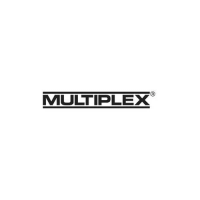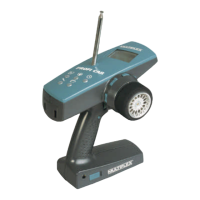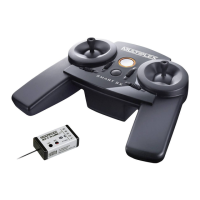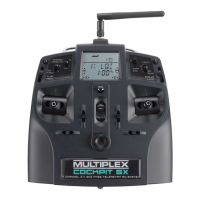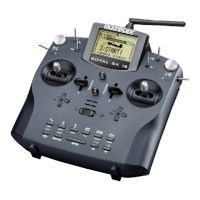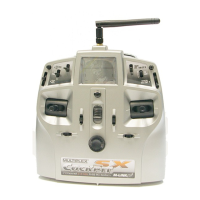Procedure
1. Adjust the direction of servo rotation.
o Servos controlled by basic functions (e.g. Aileron, Elevator,
Rudder, ...):
First, check that the rotation direction of the controlled surface correlates
to the control movement. If required, change the rotation direction in the
REV/TRM parameter (REV/CLR button).
If the rotation direction is changed later, you will need to re-calibrate it.
o Servos controlled by mixers (e.g. AILERONS+, DELTA+, V-TAIL+, ...):
In the case of servos to which a mixer has been assigned, the direction of
servo rotation is initially irrelevant. The correct direction can be set later in
the mixer. However, for paired control surfaces—e.g. ailerons with
mixers—the ailerons must rotate in opposite directions. If this is not the
case, one of the servos must be reversed.
2. Select a calibration point (P1 to P5) and open the input field.
3. Press the allocation button for the digi-adjusters.
The servo—and all the other servos to which the same control function or
mixer is assigned—automatically assume the position corresponding to the
percentage figure at the selected calibration point.
With one hand you can easily and conveniently measure and check the control
surface travel (ruler, calliper), while the other hand remains free to change the
value using the wheel.
4. If the travel is correct, press the allocation button F again.
The servo(s) assume(s) the position corresponding to the position of the
associated control.
Vertical line for orientation:
The vertical dotted line in the graph shows the current position of the associated
control for easier orientation. If you activate a value using the allocation button F,
the vertical line jumps to the corresponding point and remains there until you press
the allocation button again or operate the associated control.

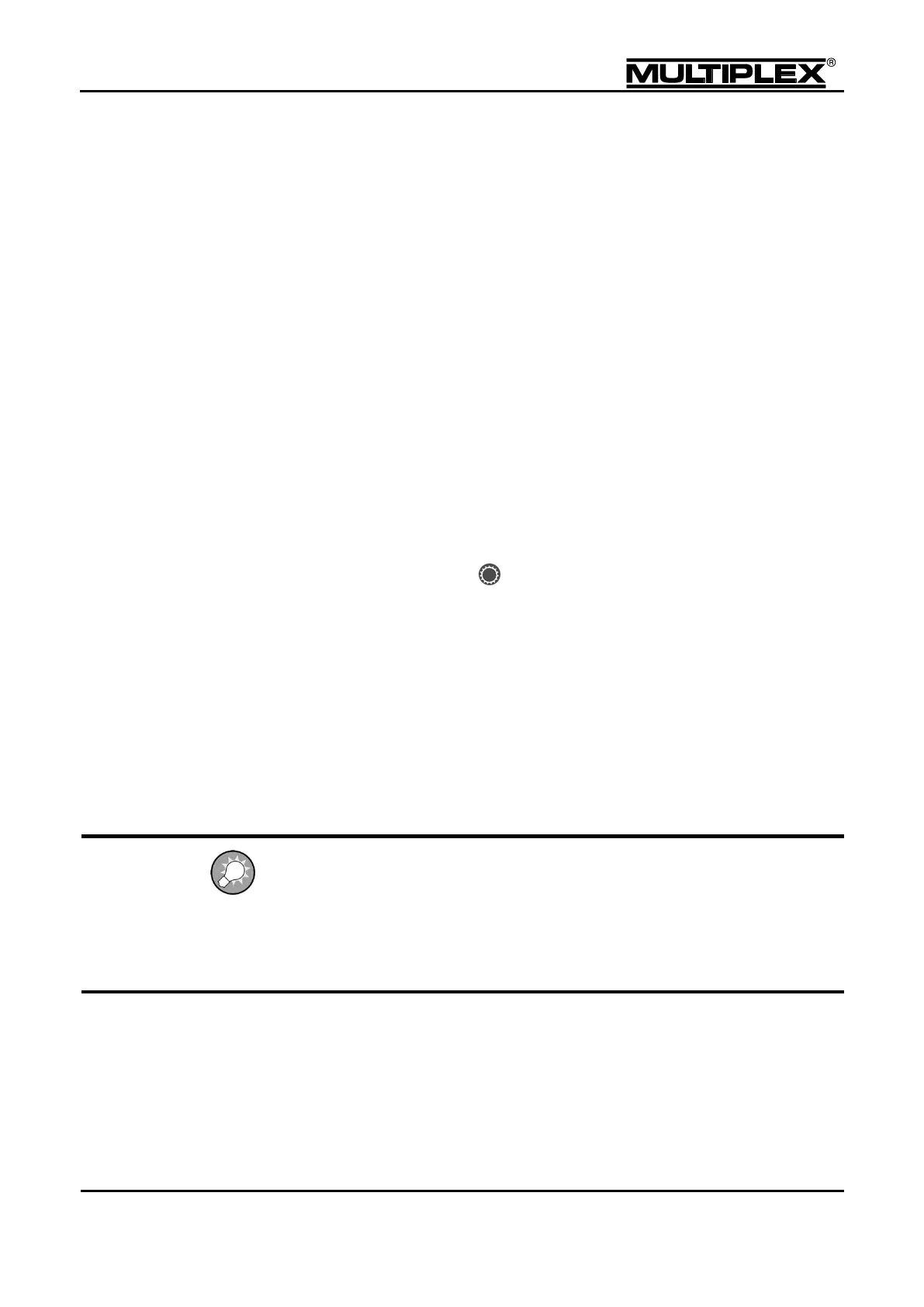